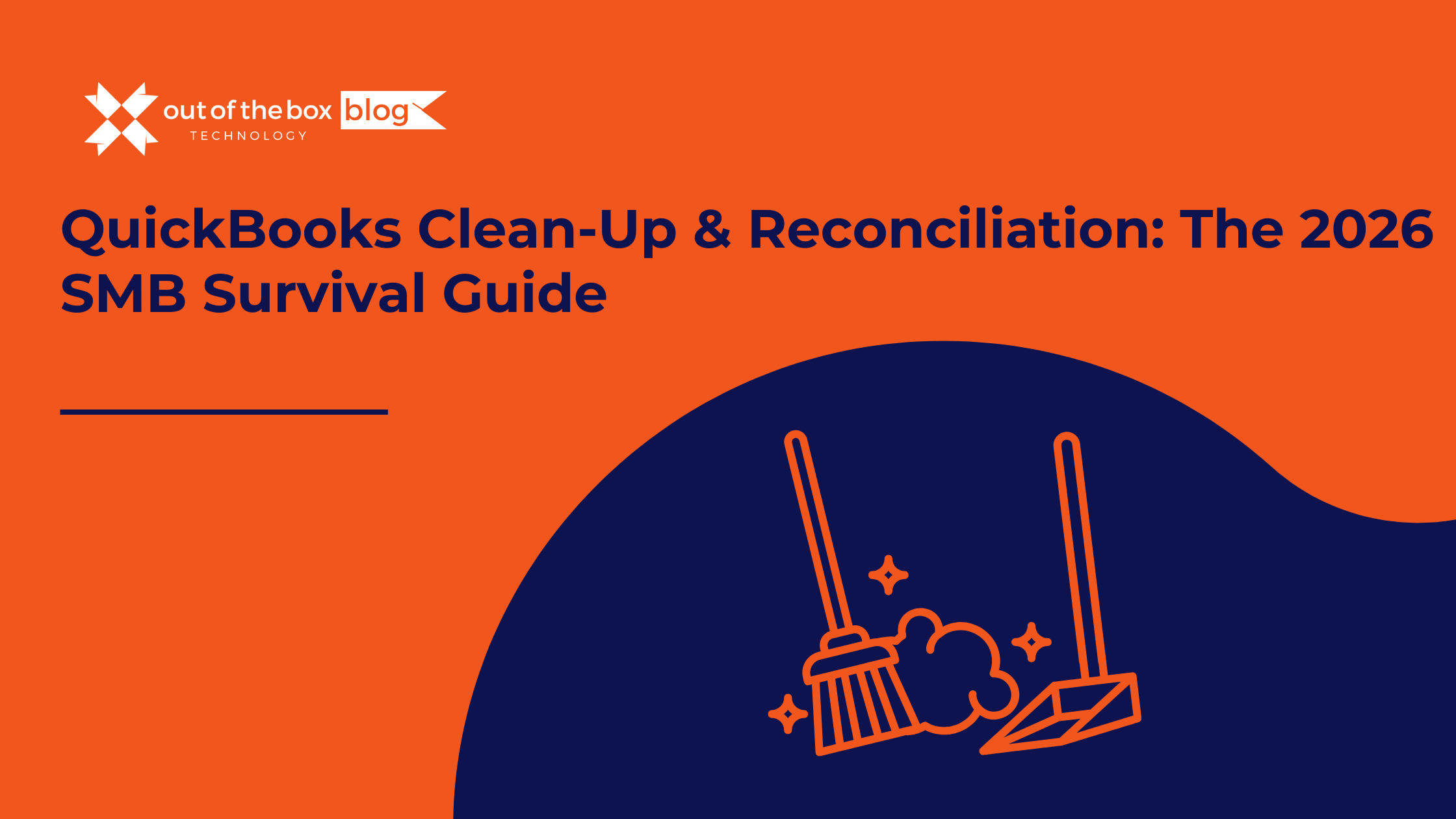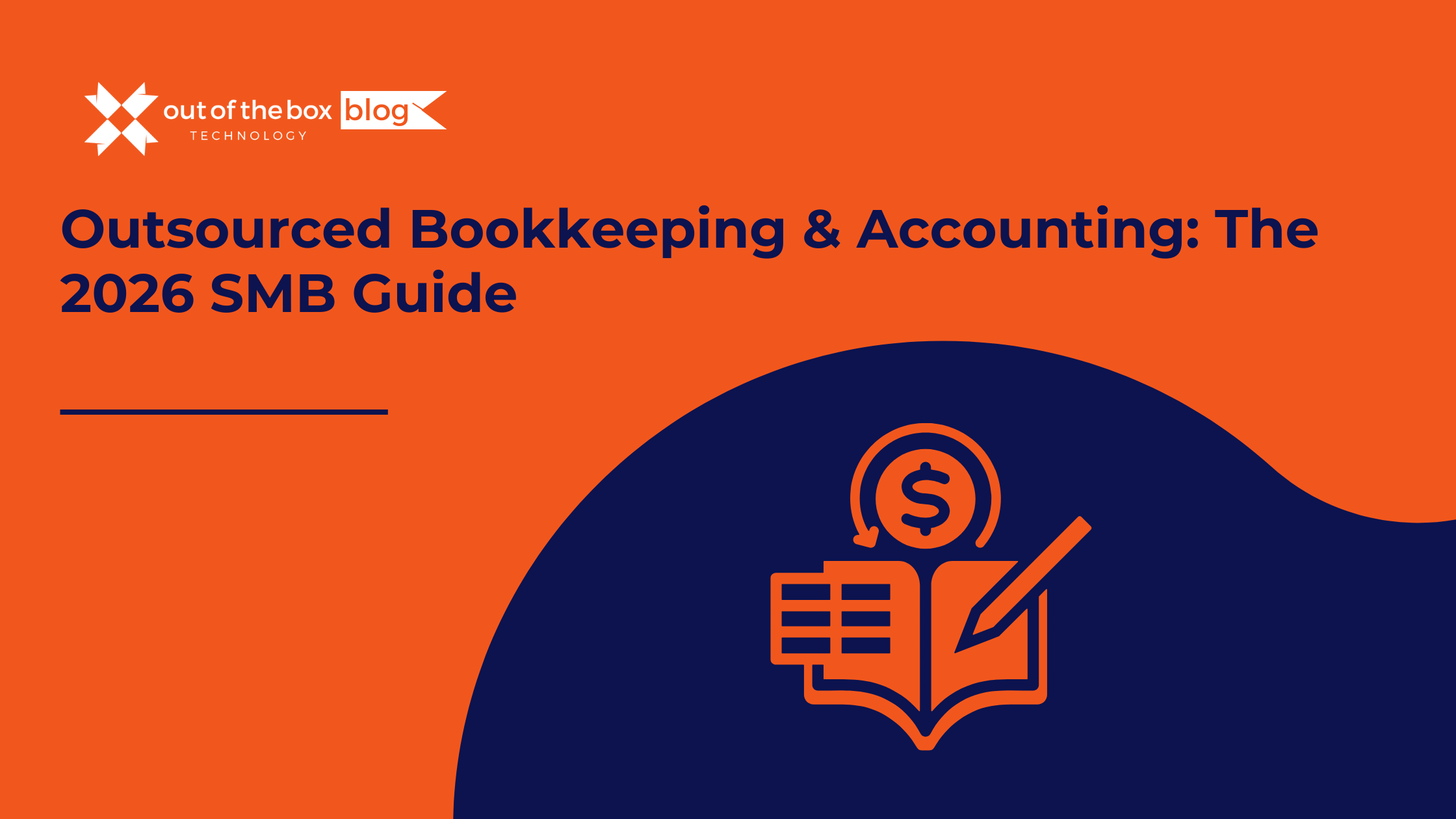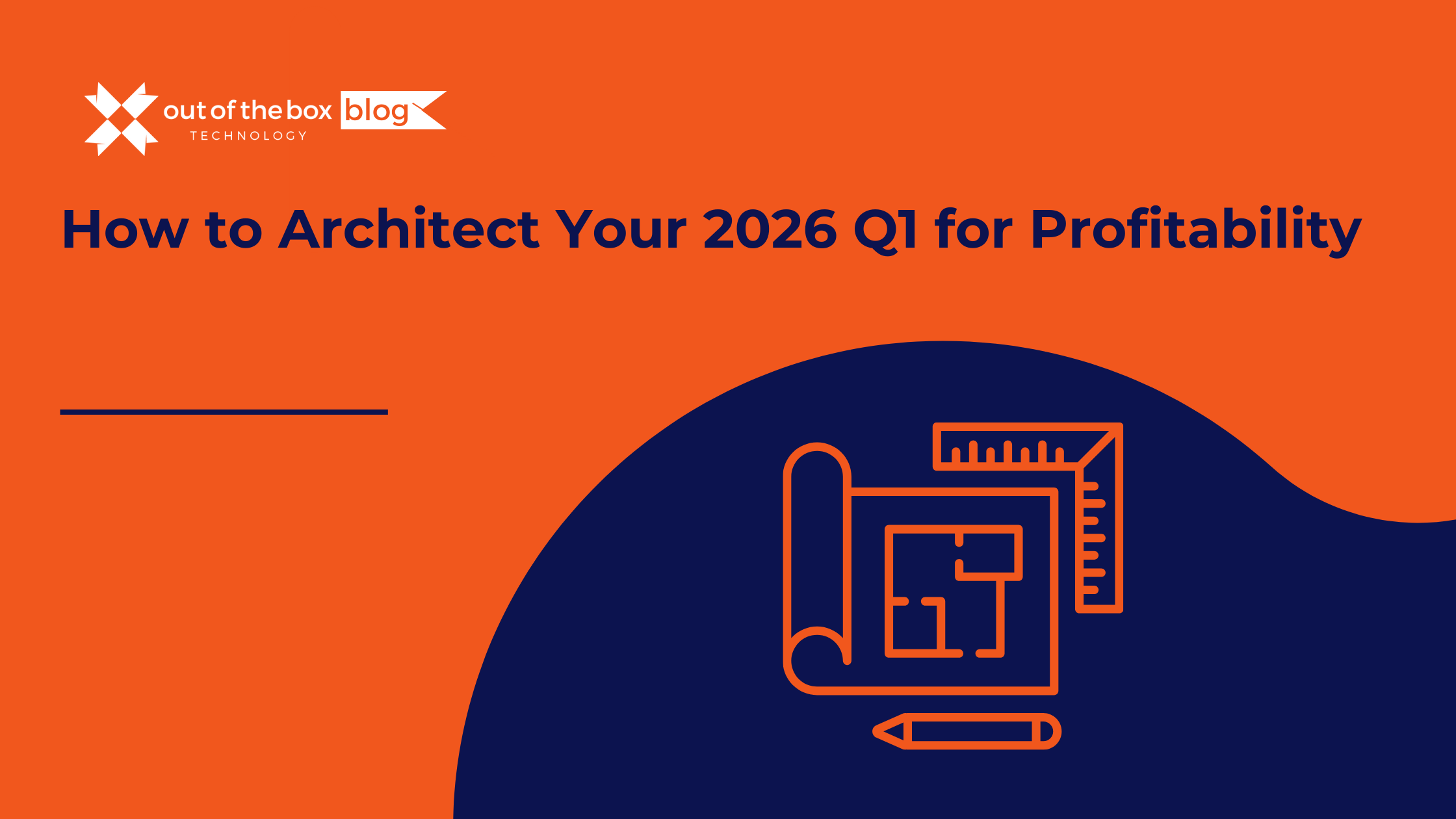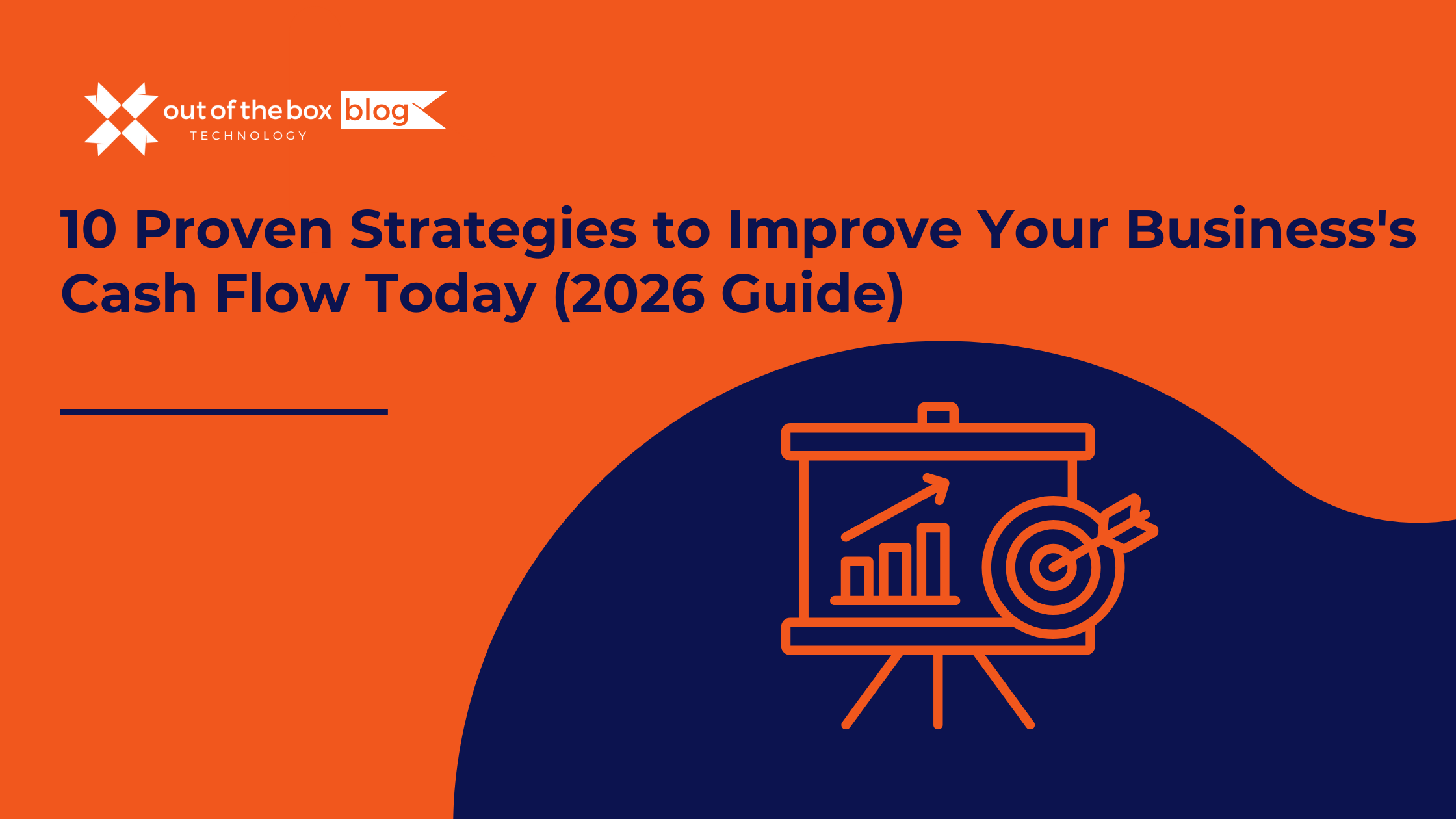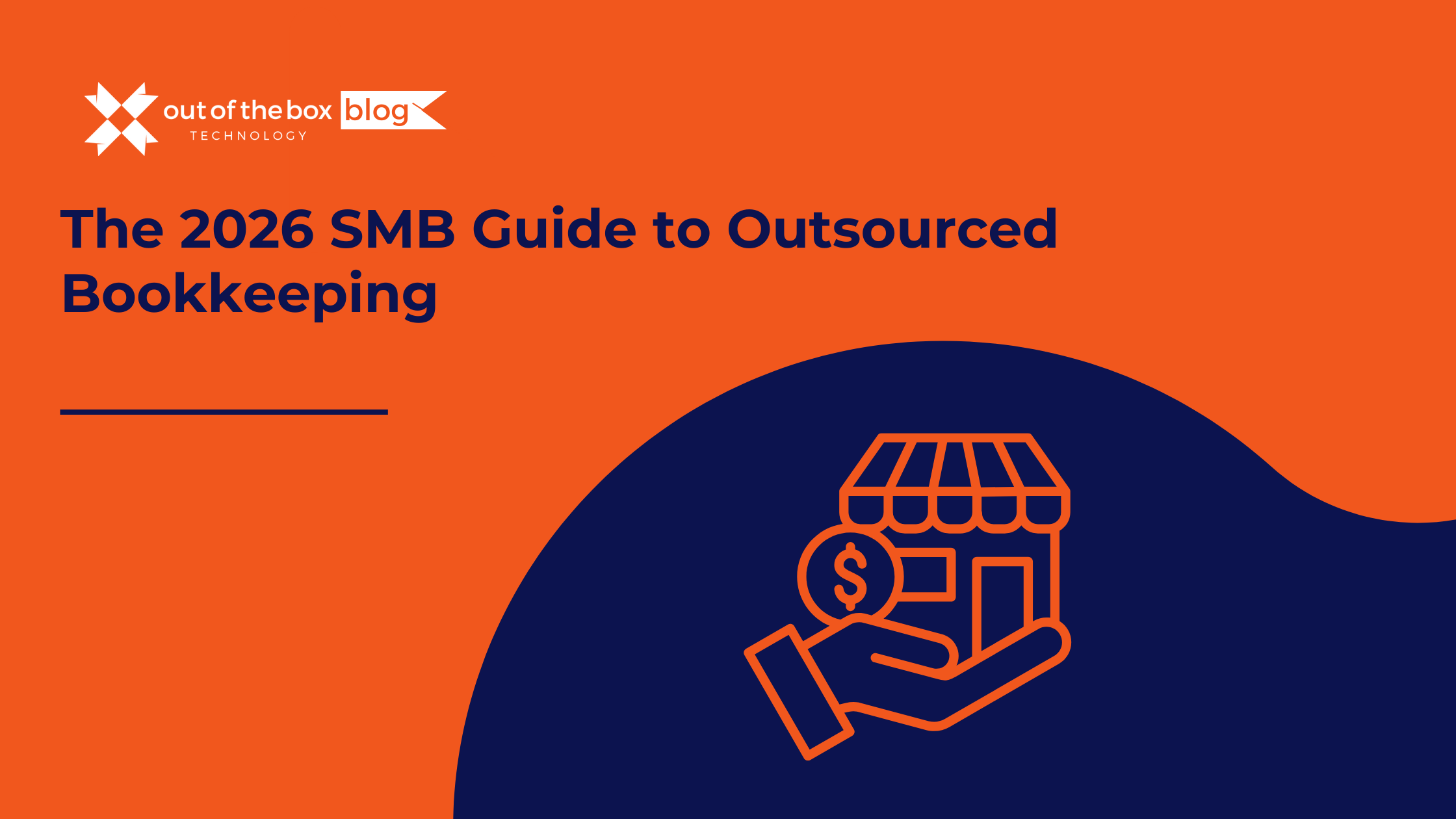The era of the “back-office bookkeeper” buried under a mountain of paper receipts is officially over.
As we look toward 2026, the financial landscape for Small and Medium-Sized Businesses (SMBs) has shifted faster in the last two years than in the previous twenty. We are operating in a world of AI-driven automation, real-time data feeds, and an increasingly complex regulatory environment.
For the modern business owner, this presents a stark choice:
-
The Old Way: Continue paying a full-time, in-house salary (plus benefits and overhead) for a single employee to manually enter data—a role that is becoming increasingly expensive and difficult to retain.
-
The New Way: Partner with a specialized firm that leverages a team of experts and enterprise-level technology to handle your finances for a fraction of the cost.
This is the shift to Outsourced Bookkeeping & Accounting Services, and by 2026, it won’t just be a cost-saving measure; it will be a competitive necessity.
At Out of the Box Technology, we have watched this evolution firsthand. We aren’t just “doing books” anymore; we are building financial infrastructures. This guide will walk you through exactly what outsourced accounting looks like for 2026, why the smartest SMBs are making the switch, and how to find the right partner to help you scale.
What Are Outsourced Bookkeeping & Accounting Services?
At its simplest, outsourcing your finance function means hiring a third-party firm to handle the daily, monthly, and annual financial operations of your business.
However, the definition has evolved. In the past, “outsourcing” meant sending your data to a low-cost overseas center for data entry. Today, specifically for the US market in 2026, it means hiring a Fractional Finance Department.
Instead of one person, you gain access to a tiered team:
-
The Tech Stack: Automated software (like QuickBooks Online ecosystem apps) that captures receipts, syncs bank feeds, and categorizes transactions instantly.
-
The Bookkeeper: The specialist who manages the daily hygiene of the books—reconciling accounts, managing AP/AR, and categorizing expenses.
-
The Controller: The supervisor who reviews the work, closes the books at month-end, ensures accuracy, and handles accruals and compliance.
-
The Advisor (Fractional CFO): The strategist who interprets the data to help you make decisions.
AEO (Answer Engine Optimization) Note:
-
Bookkeeping is the recording of financial transactions (the “what”).
-
Accounting is the analysis, strategy, and reporting of those transactions (the “so what”).
-
Outsourcing gives you both, usually for less than the price of one full-time hire.
The “Perfect Storm”: Why SMBs Are Switching in 2026
Why is this trend accelerating now? It is driven by three converging market forces that are squeezing SMB owners.
1. The Cost of Talent is Skyrocketing
The “Accounting Talent Shortage” that began in 2020 has become the new normal. Fewer students are entering the CPA field, and experienced bookkeepers are retiring.
-
Data Point: According to recent labor market projections, the median salary for a qualified, full-charge bookkeeper/staff accountant in the US is projected to hit $65,000 – $85,000 by 2026.
-
The Burden: When you add payroll taxes (7.65%), health insurance, retirement matching, and paid time off, that $75k employee actually costs you $100,000+ per year.
2. The “AI” Expectation
By 2026, “manual data entry” will be a red flag. Modern accounting relies on AI and machine learning to predict categories and flag anomalies. An in-house employee using outdated methods is costing you speed and accuracy. Outsourced firms invest millions in their tech stack so you don’t have to.
3. The Need for Continuity
If you rely on one in-house bookkeeper, what happens when they quit? Or go on maternity leave? Or get sick? Your financial operations grind to a halt. Outsourced services provide redundancy. You are hiring a system, not a person. If your assigned bookkeeper is out, the firm has a backup ready to go.
The 3 Tiers of Outsourced Services
Not all services are created equal. When evaluating partners for 2026, you will typically encounter three tiers of service. It is critical to know which one you need.
Tier 1: Transactional Bookkeeping (The Foundation)
This is the “keep the lights on” service. It ensures your tax preparer won’t fire you at the end of the year.
-
Includes: Coding bank transactions, reconciling bank/credit card accounts, monthly financial statements (Balance Sheet, P&L).
-
Best For: Solopreneurs or businesses with under $1M in revenue and simple operations.
Tier 2: Controller & Compliance (The Manager)
This is where true “Accounting” begins. This tier introduces accrual-based accounting, which is essential for growing businesses.
-
Includes: Accounts Payable (Bill Pay) management, Accounts Receivable (Invoicing) management, sales tax compliance, month-end closing procedures, and accrual adjustments.
-
Best For: Businesses with $1M – $10M in revenue, inventory, or employees.
Tier 3: Advisory & Fractional CFO (The Strategist)
This is the forward-looking tier. It moves from “recording history” to “planning the future.”
-
Includes: Budgeting, 13-week cash flow forecasting, KPI dashboarding, scenario planning (“Can I afford to hire?”), and board-level reporting.
-
Best For: Growth-stage companies, businesses preparing for a sale, or those navigating a cash crunch.
In-House vs. Outsourced: A 2026 Cost Comparison
Let’s run the numbers. As an owner, you care about the bottom line.
Scenario: A service-based business with $3M in revenue, 15 employees, and moderate complexity.
| Cost Category |
In-House Bookkeeper (FTE) |
Outsourced Accounting Service |
| Salary / Fees |
$75,000 (Median Salary) |
$36,000 – $60,000 (Flat Monthly Fee) |
| Benefits & Taxes |
$22,500 (est. 30% burden) |
$0 |
| Recruiting / Training |
$4,000 (avg. cost to hire) |
$0 |
| Software / Tech |
$2,000 (QuickBooks, etc.) |
Included (usually) |
| Office Overhead |
$3,000 (Desk, Laptop, Space) |
$0 |
| Management Time |
50+ hours/year (Your time) |
12 hours/year (Review meetings) |
| Total Annual Cost |
~$106,500 |
~$48,000 |
The Verdict: By outsourcing, you can save 50% or more while gaining access to a higher level of expertise (Controllers/CFOs) that the in-house bookkeeper likely doesn’t possess.
What to Look for in a Provider (The 2026 Checklist)
The market is flooded with “virtual bookkeepers.” How do you distinguish a pro from a novice? Use this checklist.
1. QuickBooks Expertise (Certification Matters)
Do not trust your financial data to generalists. Look for a firm that is a QuickBooks Elite or Diamond Solution Provider. This ensures they have a direct line to Intuit support and deep knowledge of the software’s advanced features.
2. The “Tech Stack” Philosophy
Ask them: “What apps do you use besides QuickBooks?”
If they don’t have an answer, run. A modern firm should be using tools like:
-
Dext or Hubdoc: For automated receipt capture.
-
Bill.com: For AP approval workflows.
-
Fathom or Jirav: For forecasting and reporting.
3. Segregation of Duties (Security)
This is critical for fraud prevention. The person who enters the bills should not be the same person who approves the payment. Ask the firm how they separate these duties to protect your cash.
4. US-Based vs. Offshore
There is a time and place for both. However, for Controller-level work and complex compliance (Sales Tax, Payroll), having a US-based team that understands the nuance of state laws is often worth the premium. Ensure you know exactly who is touching your data.
How It Works: The Onboarding Process
Many owners hesitate because they fear the transition will be messy. “My books are a disaster,” they think. “I can’t show them to anyone.”
Trust us: We have seen worse. Here is what the process typically looks like:
Phase 1: The Diagnostic (The “Health Check”)
We never start working without looking under the hood. We review your QuickBooks file to identify errors, un-reconciled accounts, and bad data.
Phase 2: The Clean-Up (Catch-Up)
Before we can do monthly work, we must fix the past. This might involve re-categorizing a year’s worth of transactions or fixing broken bank feeds. This provides a clean foundation.
Phase 3: The Process Design
We don’t just take your old process; we improve it. We set up the tech stack. We define who approves bills. We set the schedule for when reports are delivered.
Phase 4: Go-Live (Monthly Rhythm)
-
Weekly: We code transactions and manage AP/AR.
-
Monthly: We reconcile accounts and close the books.
-
Reporting: You receive your financial package and (optionally) meet with your advisor to review it.
5 Signs You Are Ready to Outsource
If you are on the fence, here are the five most common triggers that indicate it is time to make the switch:
-
You are the bottleneck: You are approving every transaction or doing the books yourself on weekends.
-
You don’t trust the numbers: You look at your P&L and feel like it’s “wrong” or missing data.
-
You are flying blind: You make decisions based on your bank balance because you don’t have a cash flow forecast.
-
You are growing: You just crossed $1M or $5M in revenue, and your complexity has outpaced your current admin staff.
-
Tax time is a nightmare: Every year, your CPA has to file an extension because your books aren’t ready.
❓ Frequently Asked Questions (FAQs)
1. Will I lose control of my money?
Absolutely not. In fact, you will gain more control. In a proper outsourced setup, you (the owner) retain the final approval on all payments. We cue up the bills in a system like Bill.com, and you click “Approve.” Money never leaves the building without your digital signature.
2. Is my data safe with a remote team?
Outsourced firms generally have better security than small businesses. We utilize enterprise-grade encryption, multi-factor authentication (MFA), and secure client portals. Compare that to an in-house bookkeeper leaving paper checks on an unlocked desk.
3. Can you work with my existing CPA?
Yes, we love CPAs! We are not tax filers; we are the daily accountants. We prepare the “clean package” that your CPA needs to file your taxes. This actually saves you money, because your CPA doesn’t have to charge you their high hourly rate to fix your bookkeeping errors.
4. What if I need someone to answer the phone/open mail?
This is the one limitation. An outsourced team is virtual. We cannot open physical mail or file paper documents. However, we can help you set up a digital mailroom service (like Earth Class Mail) to digitize everything for us.
5. How much does it cost?
Pricing is typically a flat monthly fee based on complexity (transaction volume, number of accounts, frequency of reporting). For a small business, it might start at $500/month. For a mid-sized business needing controller services, it usually ranges from $2,500 to $6,000/month—still significantly less than a full-time salary.
The Bottom Line: Future-Proof Your Finance
As we head toward 2026, the businesses that win will be the ones that are agile, data-driven, and efficient.
Sticking with the “old way” of manual, in-house bookkeeping is a liability. It is expensive, prone to error, and limits your visibility.
Partnering with an outsourced bookkeeping and accounting service transforms your finance function from a cost center into a strategic asset. You get the best tech, the best talent, and the peace of mind that comes from knowing your numbers are right.
Are you ready to see what your business looks like with a professional financial team?
At Out of the Box Technology, we are ready to build your financial infrastructure for 2026 and beyond. Let’s clean up the mess, automate the busy work, and get you back to growing your business.
START HERE

